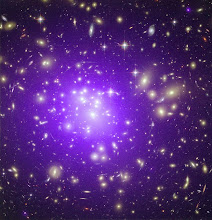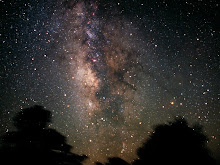Action is a fundamental constant in nature and appears with special, universal value in many phenomena. Although action appears in all kinds of mechanics from building pyramids to launching space flight vehicles, it also appears in light and light-like radiation of other frequency and energy.
Money is of supreme importance in economic activity and is often defined as an enumerated constant which is employed in transactions. These are acts in trade in which, usually, an amount of money is traded for some good or service.
The action in light is even more fundamental than that of transactions in economic activity. Even so, economic concepts are thoroughly practiced, and they cover the nature of action in the physics of natural law broadly. Describing nature's action with economic activity is like covering graffiti by repainting the entire wall.
Light-like activity is important at this time in history because economic activity is changing in some ways, and stable in others. Very essential activity involves definitions in finance and trade that have been stable for centuries, even thousands of years, are not expected to change in principle (though perhaps volume of trade) in the foreseeable future, and are highly predictable in a number of their fundamental values. Light also is an important model for economic activity which is changing because its predictable time domain has increased, and agents are in the process of determining which factors will respond to the new time domain and how. (For modeling irregularly fluctuating phenomena, light is not as useful a model; that will require principles different than these, which pertain to slowly varying components and long-term changes of kind.)
The recent past, whether one observes it in centuries or thousands of years, is one of singular change for planet Earth. This is the time when, as many writers have noted, Earth changed from a primitive planet dominated by the instincts of wild evolution, to a more or less civilized, rational planet which knows itself from other worlds in the solar system, and conceives itself as one living system, though with many individual economic agents. While much more can be said about it in detail, the crux is that the planet has committed itself to change for ever, a span of time that already comprehends a half billion to several billion years depending on how one defines economic life. During the time prior to the shaping of tools and the use of fire, economic activity consisted of kill or be killed, zero sum games of life and death and there was no money.
Now, it is changing to a world in which economic activity is always, at least eventually, gauged in terms of win-win transactions with money tokens, rational expectations, demands for human rights, ownership of and responsibility for property and accounts, and automatic systems for performing necessary and extremely valuable calculations. These will be in use thousand of years hence. It is this vast global change from wildness that has caused this time to be one of a vast beginning spanning perhaps millions of years and more.
Light provides a model for change on a vast timescale, because of the early 1900's discovery in astrophysical cosmology by the astronomer Edwin Hubble, of a shift in wavelength in light which originally emanated in the stars of distant galaxies. The fainter the galaxy, the more the light which is emitted by it is observed here on Earth as having become longer in wavelength and commensurately diminished in momentum.
With exact equivalence, the energy of light is known to be equal to the product of the speed and momentum of light. Thus it is understood, and quite valuable, that the longer light takes to reach Earth from distant galaxies diminishes in energy and increases in wavetime. The inverse of wavetime is frequency, which is more often used in this context, in part because the entire frequency spectrum of the United States is defined in commerce by the Federal Communications Commission. So believe what you are reading, and remember it: light does change slowly in energy as it travels, and the action goes into its wavetime. The action is not lost; it merely and slowly shifts or diffuses from the internal, topological-physical energy domain of the wave into the internal topological-physical time domain of the same wave.
What on Earth does this have to do with economic activity?
Consider the economic activity represented by a dollar bill. It undergoes numerous transactions and its economic frequency is understood as the number of transactions each year in which that dollar bill is used. The number of times each dollar bill is used in its lifetime-that is, before it becomes torn, is its total utility measured in acts of trade. The number of transactions is a measure used in designing currency notes to last a long time. Durable currency notes are valuable to a nation; it costs money to print new ones.
In the time from 1900 to 1950, economic activity events were measured in periods of time lasting up to five years (such as two world wars and a monstrous depression) the future was not very predictable. It was in fact frighteningly unpredictable.The world had almost survived two thousand years in one great dynasty called Rome, enumerated with the Gregorian calendar which has been invented by Julius Caesar (maybe one of his graduate students.) No other dynasty, all the way back to Cheops and Tutankhamen, had ever done that. All had fallen apart within a hand of centuries, until just about six hundred years prior to Caesar when the Babylonian civilization of Nebuchadnezzar discovered the difference between reptiles and mammals. That means one could be more effective in trade, if one took into account that human economic activity from barter to finance, would have a cold blooded side in the primitive, and a warm-blooded side more often found among people one could trust.
That's why, after Rome had assimilated that for six hundred years, a carbon's atomic number of centuries, the Roman empire was so fundamentally correct that its calendar would span as many millennia as would be necessary to reach the Moon. The United States has already trod the Moon and fetched samples of rock from it, Russia has fetched samples with robots, and a Chinese Long March rocket is on its way to the Moon to do the same, and it is rationally predicted that someday there will be tourist accommodations on the Moon (though I think the time delay will be longer than expected, it will be WELL within the next thousand years.)
We should assume that if the Moon had not been attained by now, or very soon, there would have been a nuclear war, to start over with some better idea than the cities as they exist. Where was I? Oh, yeah.
Consider two projects that are approximately equivalent in the magnitudes of their action. For various reasons such as relative differences in the rate of availability of labor and supplies, one is planned and completed in a period of five years, the other is planned and completed in twenty. Planners, with their PERT, GANNT and other time scheduling computers will put high energy into the shorter time span, and will prepare lower energy in the longer time period. This is a quantum mechanically balanced, fundamentally efficient tradeoff. Time and energy are efficiently and inversely proportional wherever the total action is constant, because action is a linear magnitude variable. That the smallest amounts of action observable are around the magnitude of the quantum is a consequence of a certain ratio that was discovered in light by atomic scientists such as Franck, Hertz and eventually Max Planck for who the quantum was named. The ratio of energy to wavelength is a constant, and the action adds linearly.
Where this relationship of time and energy are taken into account in industrial market activity, it may be more or less confidently assumed that the players have attained quantum mechanical, and probably atomic and nuclear sophistication. Industrial market activity is far more likely to be well planned in relation to the finite resources, natural environment, and on a large scale, delicate fragility of the planet.
Subscribe to:
Post Comments (Atom)







No comments:
Post a Comment